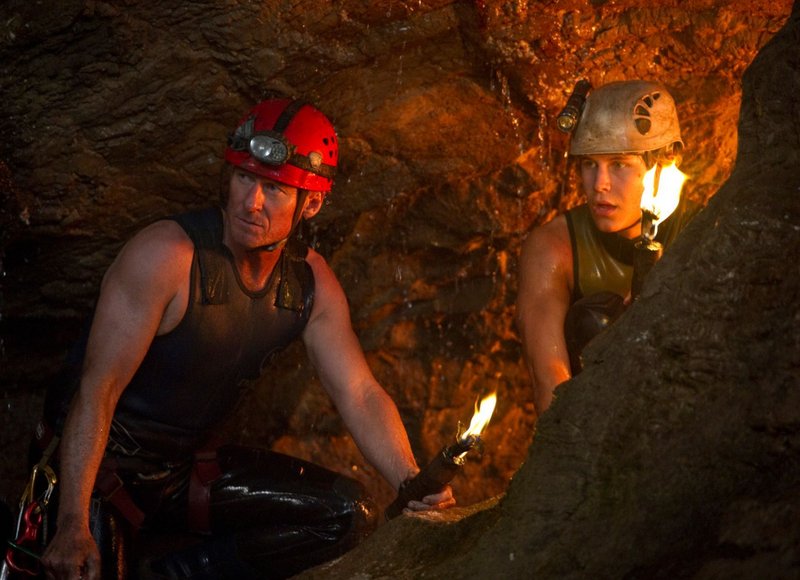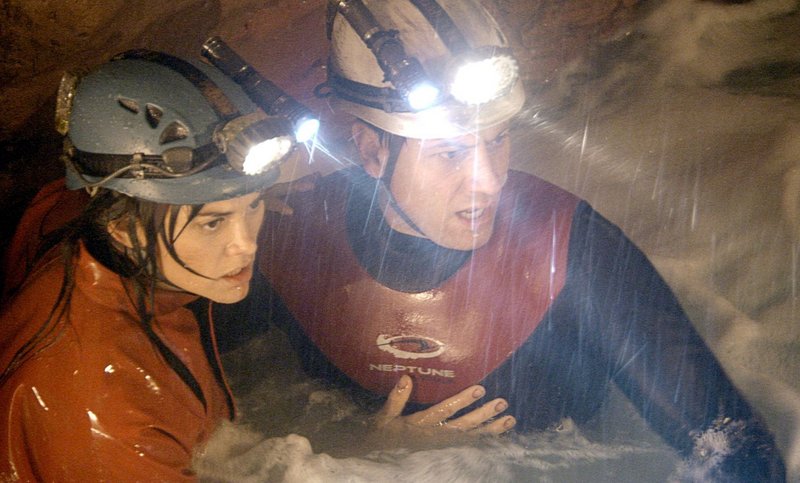LOS ANGELES — If you think your boss is intimidating, imagine how Alister Grierson feels.
The Australian filmmaker, who made his new movie, “Sanctum,” under the guiding hand of “Avatar” creator James Cameron, had to present a finished cut to the famously exacting director in Cameron’s Malibu home theater.
“Every time he’d twitch, I wondered, ‘Oh no, what did I do wrong?’ ” recalled Grierson, 41, who had previously directed only one other movie, a small Australian war picture. “It was like sitting with God at the pearly gates watching your entire life.”
Life and death are not quite at stake when “Sanctum,” a modestly budgeted ($30 million), 3-D, cave-diving adventure comes out in theaters on Friday. But the movie is the lowest-budgeted feature that Cameron, who serves as its executive producer, has been involved with in more than 25 years, and it’s an important test of his belief that 3-D can be as effective in an intimate, emotional story as it is in a grand epic.
“Sanctum” essentially asks: Is the z-axis element enough to get the filmgoing public to embrace a movie in a well-worn genre with no well-known actors and few other obvious selling points?
The film tells the story of veteran cave diver Frank (Richard Roxburgh) and his alienated son Josh (Rhys Wakefield) who wind up, along with a larger diving team, trapped far below the surface when a freak storm hits during an expedition. As the dangers mount and claim the lives of many on the team — think “Ten Little Indians,” only with natural disaster as the culprit — Frank and Josh must work through their issues if they are to survive.
The story and the emotional dynamic, however, can sometimes seem secondary to the filmmakers’ desire to show breathtaking underwater shots, such as characters navigating a claustrophobic tunnel or floating ethereally as though in a giant human aquarium. While there have been a handful of low-budget 3-D films, such as last summer’s “Piranha 3D,” most have been after-the-fact conversions designed to take advantage of the higher ticket prices the format commands. “Sanctum,” on the other hand, was conceived from the start in 3-D, and shot to take full creative effect of the tool.
“Sanctum” came together when Andrew Wight, a longtime Cameron friend and collaborator, decided to make a movie about a group of trapped cave divers using the same tools and techniques they deployed on Cameron’s documentaries. Cameron agreed to godfather the film, Wight enlisted Grierson, and the team decided to shoot the movie in Australia in late 2009 and early 2010 using some of the same cameras that Cameron used on the groundbreaking “Avatar.”
“Sanctum” is something of an unusual project for Cameron, who rarely plays patron on other filmmakers’ work and who has long talked about making a smaller feature but somehow keeps getting pulled back to “Titanic”-size films.
In fact, while the trailer flashes his name early and often, Cameron plays down his involvement.
“I can’t stop the studio marketing people from picking the path that they think is going to make the most money for the movie, but I would hope people would look past that,” he said. “It’s Andrew and Alister’s film.”
Still, even casual movie fans will recognize many of Cameron’s visual signatures in “Sanctum” — a helicopter descending into an exotic landscape as in “Avatar” and “Aliens,” underwater action sequences a la “The Abyss,” and remote cameras of the type used in “Titanic” and his documentaries. While Cameron came to the set only once — he was indeed busy making “Avatar” during much of the movie’s production — he helped develop the script and offered feedback in the editing room.
Cameron says that in addition to deploying his beloved gadgetry, “Sanctum” allowed him the chance to play with something else: a father-son relationship. “I haven’t done (that) before,” he said. “And as the father of two boys, I thought this could be interesting to explore.”
For Wight, the story is even more personal. In 1988, while the producer was leading a cave dive in Australia, a storm like the one in the film trapped him and 14 others. The group survived, but only after two uncertain days spent trying to find a new way out. “I reflected on the personalities and the people and how they got together in that survival situation,” Wight said. And I thought, ‘Boy, there’s a fantastic film to be made out of that.’ “
Cameron too is a diving enthusiast. “Jim doesn’t play golf and he doesn’t do sports,” Wight says. “This is Jim’s thing. It keeps him grounded.”
Wight has helped Cameron go on half a dozen dives exploring various wrecks and deep-marine life while the pair filmed documentaries about them.
“We looked at our last expedition and said, ‘This is more complex logistically and technologically than a feature motion picture,’ ” Cameron said, describing the chain of ideas that led to “Sanctum.” So Cameron decided to do what he often does: combine a dive with a film shoot.
Send questions/comments to the editors.




Success. Please wait for the page to reload. If the page does not reload within 5 seconds, please refresh the page.
Enter your email and password to access comments.
Hi, to comment on stories you must . This profile is in addition to your subscription and website login.
Already have a commenting profile? .
Invalid username/password.
Please check your email to confirm and complete your registration.
Only subscribers are eligible to post comments. Please subscribe or login first for digital access. Here’s why.
Use the form below to reset your password. When you've submitted your account email, we will send an email with a reset code.